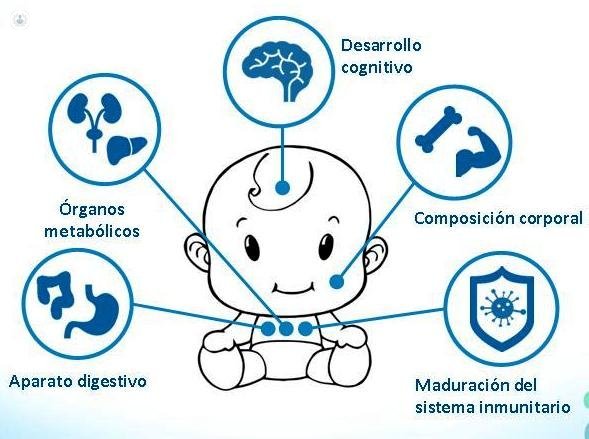What foods can eat an infant?
Written by:
When it comes to supplementary feeding we are referring to solid foods, semisolid or liquid containing nutrients and energy and infants additionally administered to human milk or infant formula. The introduction of complementary foods is considered a critical step in the infant's diet since they affect growth and have consequences in the long-term health.
Complementary feeding in infants
Human milk provides a unique source of nutrition for infants in the early stages of life. Its composition is dynamic and evolves over time to suit the nutritional needs of infants. In particular, the protein concentration follows a temporal pattern and decreases with the progressive stages of lactation.
However, in the formula-fed infants protein intake it is higher than in the breastfed. If you also during the period of complementary feeding a high protein intake occurs there is an increased risk of developing obesity later in life. Therefore, today we recommend using formulas with optimized quality and quantity and supplementary feeding does not increase the overall protein intake to promote proper growth and healthy development of infants protein profile.
The two key reasons for starting complementary feeding are:• Breastfeeding alone is insufficient to meet the nutritional needs of the developing child.• It is important to introduce solid foods with new textures and flavors to develop healthy eating habits.
The World Health Organization (WHO) and the American Academy of Pediatrics recommend exclusive breastfeeding for the first six months, with the introduction of complementary feeding thereafter. The European Society for Pediatric Gastroenterology, Hepatology and Nutrition recommends its introduction between 4 and 6 months old.
The common practice in pediatrics is to introduce iron - fortified cereals, followed by fruits and vegetables and then meat. They should introduce new foods "single ingredient" every time and should not introduce new foods for at least 3 to 5 days. Between 7 and 8 months of age, infants should eat foods from all food groups. The whole cow 's milk should not be introduced until 12 months of age.
Parents should know that early introduction of complementary feeding, below 4 months of age, and excess of protein intake has been linked to the development of overweight, obesity, diabetes mellitus, cardiovascular disease, atopic disease, allergies and celiac disease. And a late introduction of complementary foods can cause poor nutritional status and compromise the immune development in infants.

Supplementary feeding in preterm infants
Premature infants have a different nutritional requirements of those born at term, especially for energy, protein, polyunsaturated fatty acids long chain, iron, zinc, calcium and selenium. An optimal nutritional intake is very important in these infants from birth to children for proper growth, especially cephalic growth that can have an impact on the development of long-term neurodevelopmental.
Therefore, the introduction of complementary feeding in premature infants is very important to avoid stunting and important nutritional deficiencies. The timing for introduction will depend more on your level of gross motor development, especially the head control that chronological age.
Edited by Roser Berner Ubasos.


